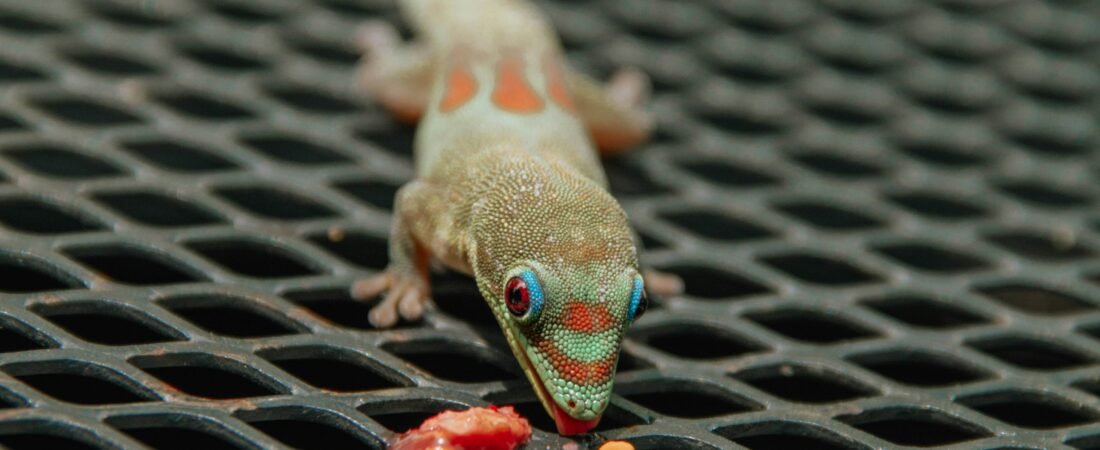Whether you’re a seasoned herpetoculturist or a curious newcomer, keeping reptiles as pets can be an incredibly rewarding experience. From the vibrant colors of a crestie gecko to the serene presence of a ball python, these fascinating creatures offer unique companionship and a glimpse into a world very different from our own. In this comprehensive, SEO-friendly guide, we’ll cover everything you need to know to start your reptile-keeping journey on the right foot (or scale), including choosing the perfect species, designing an ideal terrarium setup, providing proper nutrition, ensuring health and wellness, and more.
Table of Contents
- Why Keep Reptiles as Pets?
- Choosing Your First Reptile
- Popular Beginner-Friendly Species
- Assessing Your Lifestyle and Space
- Setting Up the Perfect Terrarium
- Enclosure Size and Material
- Substrate Options
- Heating and Lighting Essentials
- Humidity and Ventilation
- Feeding and Nutrition
- Insectivores vs. Omnivores vs. Carnivores
- Meal Frequency and Supplementation
- Handling and Socialization
- Building Trust Gradually
- Safe Handling Techniques
- Health, Veterinary Care, and Common Problems
- Recognizing Signs of Illness
- Finding a Reptile-Savvy Vet
- Preventative Health Practices
- Maintenance and Cleaning
- Daily, Weekly, and Monthly Tasks
- Deep-Cleaning Your Terrarium
- Common Pitfalls and How to Avoid Them
- Advanced Tips for Enthusiasts
- Conclusion
Why Keep Reptiles as Pets?
Reptiles are increasingly popular among pet enthusiasts for several reasons:
-
Low Allergen Risk
Unlike furry pets, reptiles produce no dander, making them ideal for allergy sufferers. -
Fascinating Behaviors
Watching a chameleon change color or a bearded dragon bask can be mesmerizing. -
Longevity
Many reptiles live for 10–30 years, offering long-term companionship. -
Space Efficiency
A well-designed terrarium can house a reptile comfortably in a relatively small footprint.
By understanding their unique needs, hobbyists can enjoy the tranquility and intrigue that reptile pets bring.
Choosing Your First Reptile
Selecting the right species sets the stage for a positive experience.
Popular Beginner-Friendly Species
-
Leopard Gecko (Eublepharis macularius)
-
Docile, easy to handle
-
Simple diet of crickets and mealworms
-
No special UVB lighting required
-
-
Crested Gecko (Correlophus ciliatus)
-
Arboreal and nocturnal
-
Diet primarily of fruit-based gecko diet
-
Requires moderate humidity (50–70%)
-
-
Bearded Dragon (Pogona vitticeps)
-
Very social and interactive
-
Omnivorous: vegetables, insects, occasional fruit
-
Basks under a strong UVB and heat source
-
-
Ball Python (Python regius)
-
Generally calm and slow-moving
-
Feeds on appropriately sized rodents
-
Requires secure enclosure with stable temperature gradient
-
Assessing Your Lifestyle and Space
-
Time Commitment:
Handling, feeding, and cleaning schedules vary by species. Crested geckos need less frequent feeding than bearded dragons. -
Physical Space:
A juvenile bearded dragon may start in a 40-gallon tank but quickly needs a 75–120 gallon as an adult, whereas leopard geckos are happy in a 20-gallon terrarium. -
Budget:
Initial setup (terrarium, lighting, heating, décor) can range from $150 to $500+ depending on the species.
Setting Up the Perfect Terrarium
Enclosure Size and Material
-
Glass Terrariums: Great for maintaining humidity; common sizes range from 20 to 120 gallons.
-
PVC or PVC-Backed Mesh Terrariums: Better at retaining heat and moisture for tropical species.
Substrate Options
-
Paper Towels or Reptile Carpets: Easy to clean, ideal for quarantining new arrivals.
-
Coco Fiber or Orchid Bark: Holds moisture well; good for species requiring higher humidity.
-
Calcium Sand (with caution): Provides ingestion hazard for some species; only recommended for experienced keepers who know their pet’s habits.
Heating and Lighting Essentials
-
Heat Sources:
-
Ceramic heat emitters (no light)
-
Under-tank heating pads
-
-
Lighting:
-
UVB bulbs (5–10% output) for calcium metabolism
-
Full-spectrum daylight bulbs for diurnal species
-
Maintain a temperature gradient: a basking spot at 32–35 °C (90–95 °F) tapering down to 24–27 °C (75–80 °F) on the cool side.
Humidity and Ventilation
-
Humidity Monitors: Digital hygrometers help you maintain species-specific levels (e.g., 30–40% for desert dwellers; 50–70% for tropical species).
-
Misting Systems or Manual Spray: Boost humidity for shed aids.
-
Ventilation Panels: Prevent mold by allowing air exchange.
Feeding and Nutrition
Insectivores vs. Omnivores vs. Carnivores
-
Insectivores (e.g., leopard geckos): Crickets, roaches, mealworms dusted with calcium and vitamins.
-
Omnivores (e.g., bearded dragons): A mix of leafy greens, vegetables, occasional fruits, and insects.
-
Carnivores (e.g., ball pythons): Appropriately sized frozen-thawed rodents.
Meal Frequency and Supplementation
-
Juveniles: Every day or every other day.
-
Adults: Two to three times per week for insectivores; once per week for many snakes.
-
Supplements:
-
Calcium without D3 at most feedings, with D3 twice a month.
-
Multivitamin powder once a week.
-
Handling and Socialization
Building Trust Gradually
-
Start Slow: Place your hand in the enclosure without trying to pick up the reptile for several sessions.
-
Offer Food by Hand: Associates your presence with positive outcomes.
-
Short Sessions: Handle for 5–10 minutes at first, gradually increasing duration.
Safe Handling Techniques
-
Support the Body: Cradle from beneath, never grab by the tail (especially for species with detachable tails).
-
Stay Low: Handle close to a table or the floor to minimize injury from falls.
Health, Veterinary Care, and Common Problems
Recognizing Signs of Illness
-
Anorexia or Weight Loss
-
Shedding Issues (retained shed)
-
Lethargy or Erratic Behavior
-
Respiratory Noises (wheezing, bubbling at nostrils)
Finding a Reptile-Savvy Vet
-
Search for veterinarians certified by the Association of Reptilian and Amphibian Veterinarians (ARAV).
-
Schedule annual wellness checks, even if your pet seems healthy.
Preventative Health Practices
-
Quarantine New Arrivals: Minimum of 30 days to monitor for parasites or infections.
-
Regular Fecal Exams: Every 6–12 months.
-
Clean Water Dishes Daily: Prevent bacterial growth.
Maintenance and Cleaning
Daily Tasks
-
Spot-clean feces and shed skin.
-
Check temperatures and humidity.
Weekly Tasks
-
Change water dishes.
-
Wipe down glass and décor with reptile-safe disinfectant.
Monthly Tasks
-
Replace substrate as needed.
-
Deep-clean enclosure: remove all décor, scrub with a 10% bleach solution, rinse thoroughly, and dry before reassembly.
Common Pitfalls and How to Avoid Them
| Pitfall | Solution |
|---|---|
| Improper Temperature Gradient | Use dual thermostats and multiple probes |
| Overfeeding | Stick to species-specific feeding schedules |
| Inadequate UVB Exposure | Replace bulbs every 6–12 months; position at correct distance |
| Neglecting Quarantine | Always isolate new pets; decontaminate equipment |
Advanced Tips for Enthusiasts
-
Bioactive Terrariums: Incorporate live plants, springtails, and isopods for natural waste breakdown and enriched microclimate.
-
Behavioral Enrichment: Offer hide boxes, climbing branches, and varied terrain to encourage exploration.
-
Breeding Projects: Research specific pairing protocols, egg incubation methods, and ethical considerations.
Conclusion
Keeping reptiles as pets brings a unique blend of tranquility, fascination, and responsibility. By selecting the right species, creating a well-designed terrarium, providing balanced nutrition, attending to health needs, and remaining vigilant against common pitfalls, you’ll set both you and your scaly companion up for years of rewarding companionship. Remember: research is your best tool. Continue learning from reputable sources, connect with local herpetological societies, and consider joining online forums to share experiences and troubleshoot challenges. Welcome to the vibrant world of reptile keeping—your journey has only just begun!

